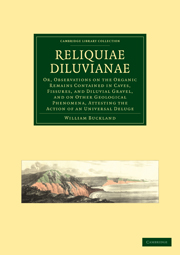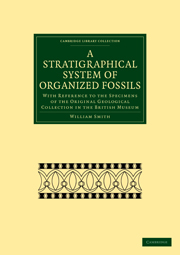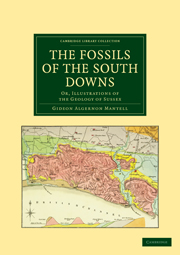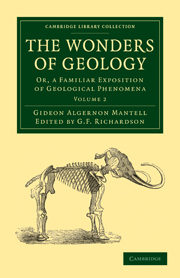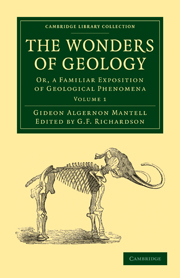Reliquiae Diluvianae
William Buckland (1784–1856), Dean of Westminster, was an English geologist best known for his contributions to palaeontology. He became the first Reader in Geology at the University of Oxford in 1818. Buckland spent 1819–1822 investigating fossil remains in caves, in order to refine his concept of catastrophism. His research led him to the realisation that hyena remains in Kirkland Cave, Yorkshire, were the remains of an ancient ecosystem and were not relics of the Flood; this led to his being awarded the Copley Medal by the Royal Society of London in 1822. This volume, first published in 1823, contains a full account of Buckland's influential research in Kirkland Cave, which demonstrated for the first time the ability of scientific analysis to reconstruct events from deep time. Buckland's support for and influential revision of the concept of catastrophism is also illustrated in this volume.
Product details
February 2011Paperback
9781108021142
352 pages
297 × 210 × 19 mm
0.85kg
22 b/w illus. 1 colour illus. 4 maps 1 table
Available
Table of Contents
- 1. Cave at Kirkdale
- 2. Chronological inferences from it
- 3. Caves at Kirby Moorside
- 4. Open fissure in Duncomb Park
- 5. Cave at Hutton, in the Mendip Hills
- 6. Cave on Derdham Down, near Clifton
- 7. Cave at Balleye, near Wirksworth
- 8. Dream Cave, near Wirksworth
- 9. Three sets of caves near Plymouth
- 10. Cave at Crawley Rocks, near Swansea
- 11. Cave at Paviland, near Swansea
- 12. Caves in Germany
- 13. Osseous Breccia of Gibraltar, Nice, Dalmatia, etc.
- 14. Human remains in caves
- 15. Evidences of an inundation afforded by phenomena on the earth's surface
- 16. Postscript
- Appendix
- 17. Explanation of the plates
- Index.

